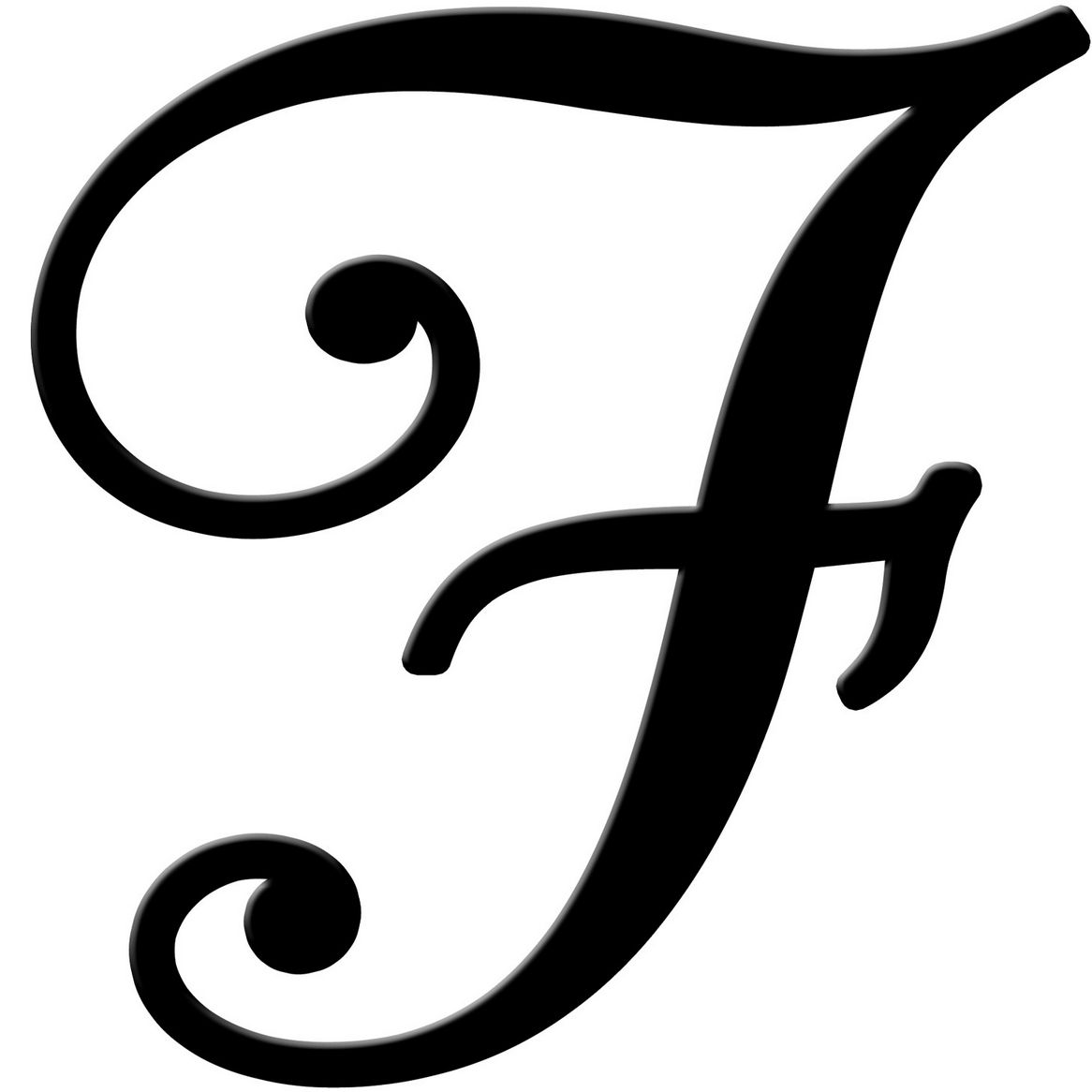The Art Of Writing: Mastering The Cursive F
When it comes to the beauty of handwriting, cursive writing holds a special place in the hearts of many. It adds a personal touch to written communication, and each letter dances across the page with elegance and style. Among the various letters that form the cursive alphabet, the cursive f stands out for its unique shape and graceful strokes. This article delves into the intricacies of the cursive f, exploring its significance, technique, and tips for mastering it.
In an age dominated by digital communication, the art of handwriting, particularly cursive writing, is often overlooked. However, the cursive f represents not just a letter, but a connection to tradition and personal expression. Whether you are a student, a calligraphy enthusiast, or someone looking to enhance their handwriting skills, learning to write a beautiful cursive f can be a rewarding journey. In this article, we will guide you through the various aspects of the cursive f and how to incorporate it into your writing.
As we venture into the world of cursive writing, we will address some common questions and concerns that arise when learning this art. From understanding the basics of cursive handwriting to mastering the cursive f, our comprehensive guide will provide you with the tools and knowledge needed to elevate your writing skills. So, are you ready to embark on this artistic journey and discover the beauty of the cursive f?
What is Cursive Writing?
Cursive writing is a style of penmanship in which the letters are connected to form a flowing script. Unlike print writing, which consists of separate letters, cursive writing allows for a more fluid and expressive form of writing. This style is often taught in schools as a means of helping students develop fine motor skills and improve their writing speed.
Why is the Cursive F Important?
The cursive f is not just another letter; it is significant for several reasons. Firstly, it is one of the letters that can make or break the overall appearance of a piece of writing. A well-crafted cursive f can enhance the beauty of your handwriting, while a poorly executed one can detract from it. Additionally, the cursive f serves as a foundation for other letters, influencing how they are formed in relation to it.
How to Write a Cursive F?
Learning to write a cursive f starts with understanding its basic strokes. Here are step-by-step instructions:
- Begin with a small loop at the top, moving slightly to the right.
- Draw a downward stroke that curves at the bottom, creating a rounded shape.
- From the bottom of the curve, extend a horizontal stroke to the right.
- Finally, loop back up to create a connecting stroke for the next letter.
What are the Common Mistakes to Avoid When Writing Cursive F?
When learning to write the cursive f, it's essential to be aware of common pitfalls that can affect the overall quality of your handwriting. Here are some mistakes to avoid:
- Inconsistent size: Ensure that your cursive f is proportionate to the other letters.
- Disconnected strokes: Practice making smooth connections to maintain the flow of your writing.
- Overly complicated loops: Keep the loops simple to avoid making the letter look cluttered.
Are There Different Styles of Cursive F?
Yes, there are various styles of cursive writing, and the cursive f is no exception. Some people may prefer a more traditional approach, while others may opt for a modern twist. The key is to find a style that resonates with you and practice it consistently.
How Can I Practice Writing Cursive F Effectively?
Effective practice is crucial for mastering the cursive f. Here are some tips to enhance your practice sessions:
- Use lined paper to maintain consistent height and spacing.
- Start with repetitive drills, focusing solely on the cursive f.
- Gradually incorporate the cursive f into words and sentences.
- Consider using calligraphy pens or markers for a more aesthetic appeal.
Can Cursive Writing Improve My Overall Handwriting Skills?
Absolutely! Practicing cursive writing, including the cursive f, can enhance your overall handwriting skills. It encourages better control of the pen, promotes fluidity in writing, and fosters a unique personal style. Moreover, the connection between letters in cursive writing can contribute to an increase in writing speed and efficiency.
Conclusion: Embrace the Beauty of Cursive F
In conclusion, the cursive f is more than just a letter; it is a symbol of artistic expression and personal style. By understanding its significance and practicing the techniques outlined in this article, you can master the cursive f and elevate your handwriting to new heights. So grab your pen, embrace the beauty of cursive writing, and let the cursive f flow gracefully across the page!
Article Recommendations
- Tiffany Springs Water Park
- Socialmediahot25_0.xml
- Beldots Boobs
- Nancy Mace Military Service
- Movies4u South Hindi Dubbed
- Levotiroxina Para Que Sirve
- Kaitlyn Krems Onlyfans Leaked
- Draker2_0.xml
- Draker4_0.xml
- Taylor Swifts Parents Divorced




